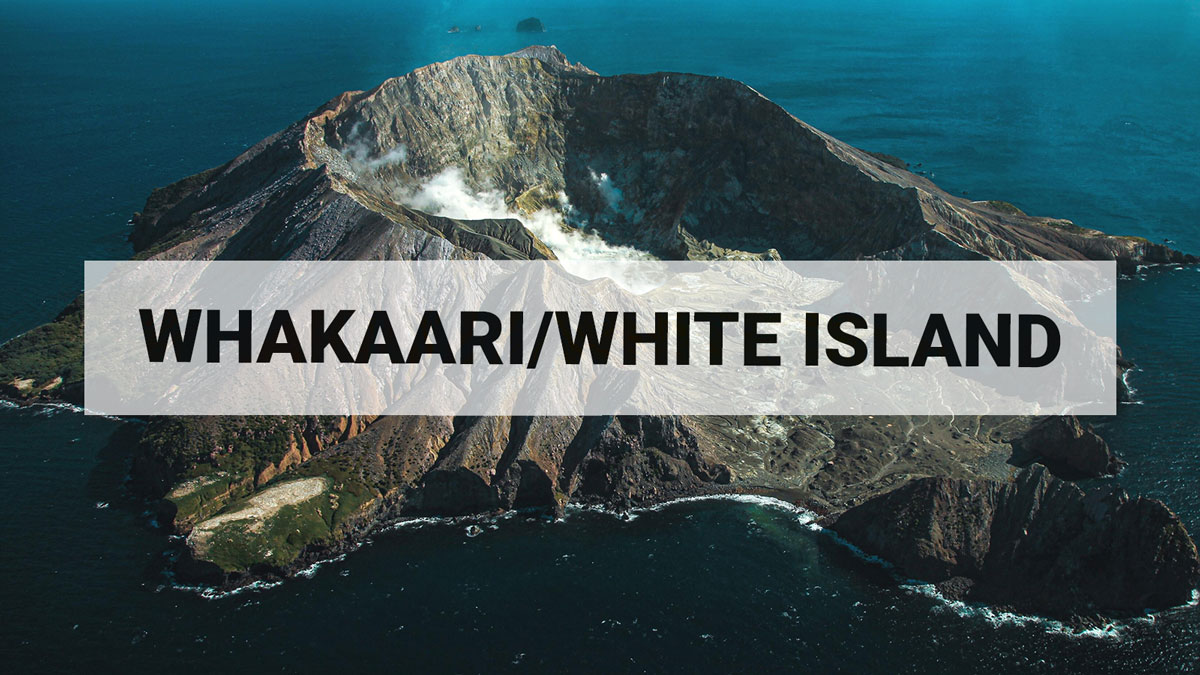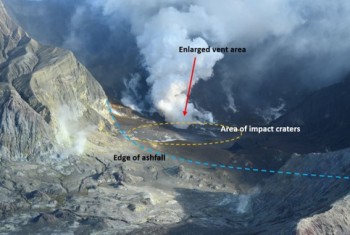
Emission of steam and volcanic gas continues; recent minor eruptive activity at Whakaari/White Island confirmed. Volcanic Alert Level remains at Level 2 and Aviation Colour Code remains Yellow.
A gas and observation flight on Thursday 18 July 2024 has confirmed a decrease in the level of activity at Whakaari/White Island since 12 July. Analysis of data from two gas flights alongside ground deformation satellite data confirms minor eruptive activity occurred early July. A steam and gas plume continues to be emitted from an enlarged vent on the crater floor.
The Volcanic Alert Level remains at Level 2 (moderate to heightened unrest) and the Aviation Colour Code remains Yellow.
Analysis of data collected during two recent gas flights together with ground deformation data from satellite radar has confirmed the active vent was enlarged by minor eruptive activity, most likely around 3-7 July when larger than normal plumes were observed at the island by coastal observers and captured by the GeoNet Whakatāne web camera. The satellite data from 10 July indicates the active vent has enlarged in size around 20 m. Analysis of photographs from the gas and observation flights also shows there has been a minor explosive eruption creating impact craters caused by flying rocks, out to about 250 m from the active vent and a thin ashfall deposit, extending over more of the crater floor (Figure 1).

Interpreted image showing a plume of gas and steam emitting from the enlarged vent area (arrowed), the area where impact craters can be seen (orange dash) and the limits of the minor ashfall (blue dash). Image from 12 July 2024.

Volcanic gas emissions remain at moderate levels compared to what was recorded be-fore May but are now declining. The crater lake has dried up. Gas and steam are now exiting less vigorously from the enlarged vent on the crater floor. Steam and gas emissions are also occurring from several other vents that have existed for some time. No ash was observed in the plume during the flight on 18 July.
Although the Volcanic Alert Level remains at Level 2, eruptions can still occur with little or no warning as shown by short lived activity earlier this month. The Volcanic Alert Level reflects the current level of volcanic unrest or activity and is not a forecast of future activity. While Volcanic Alert Level 2 is mostly associated with volcanic unrest hazards (including discharge of steam and hot volcanic gases, earthquakes, landslides, and hydrothermal activity), the potential for eruption hazards remains.
As we have no sensors on the island, we continue to rely on remote cameras and satel-lite imagery, complemented with gas and observation flights to assess the volcanic activity. Further gas and observation flights will be conducted by GNS Science volcanologists to maintain a close eye on activity levels.
GNS Science’s National Geohazards Monitoring Centre and Volcano Monitoring Group, through the GeoNet programme, will continue to closely monitor Whakaari/White Island for further changes in unrest.
Further information about the Volcanic Alert Levels and what they mean can be found here.
More information on the recent minor eruptions can be found here.
More information on the recent plume activity can be found here.
Craig Miller Duty Volcanologist
Media contact: 021 574541 or media@gns.cri.nz
